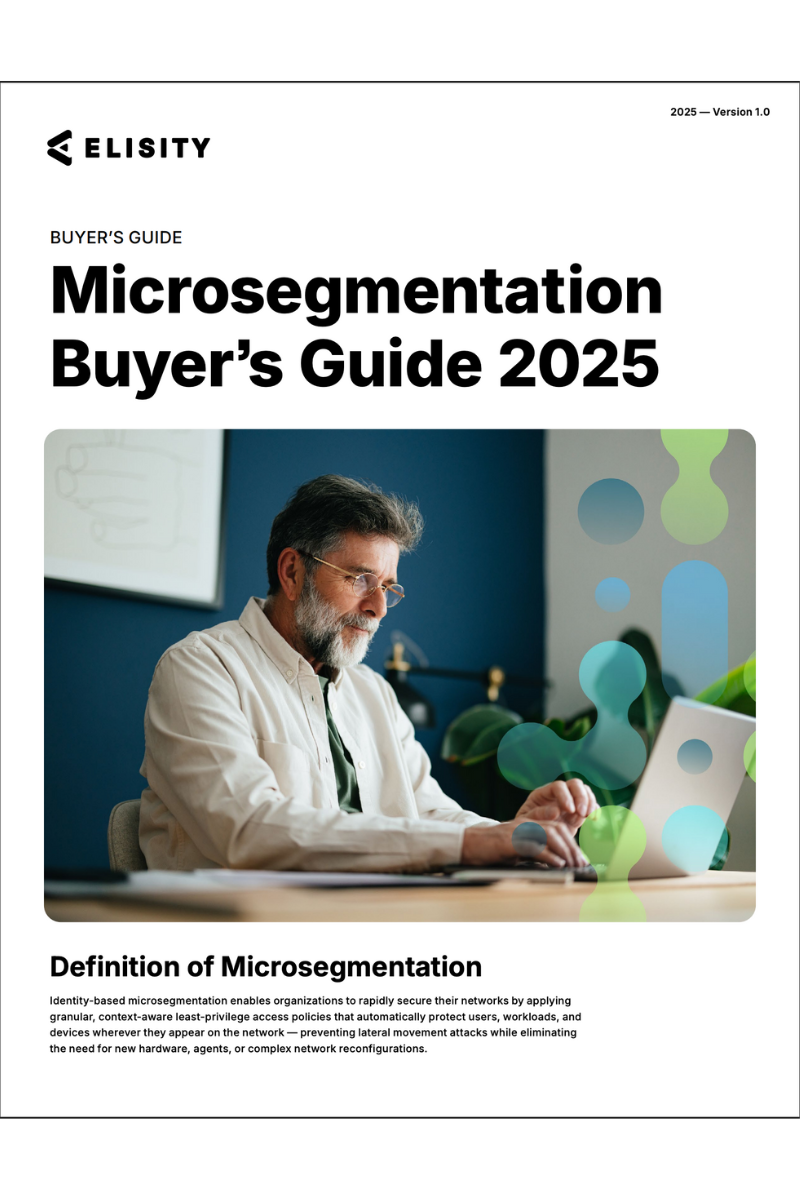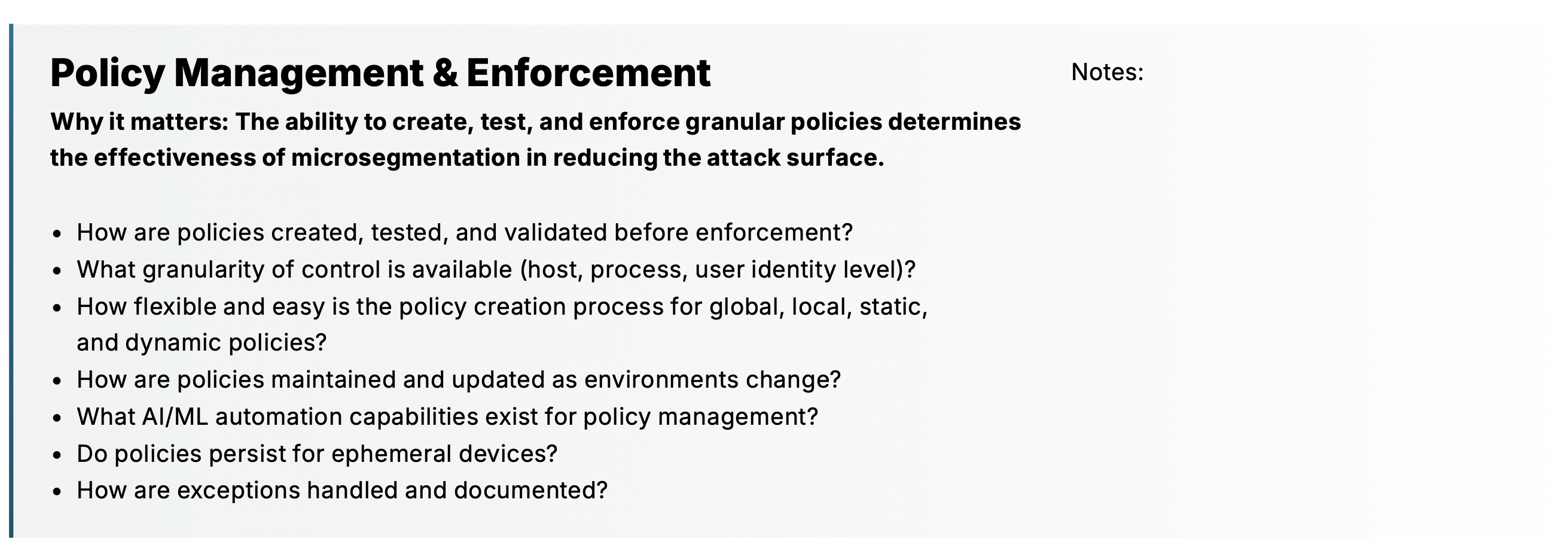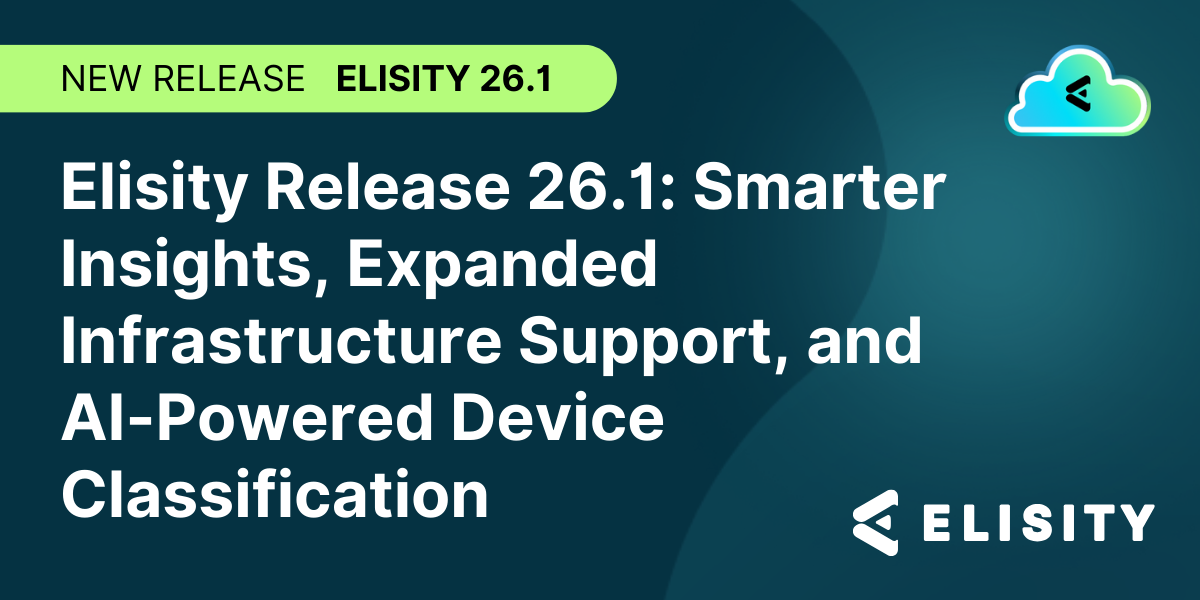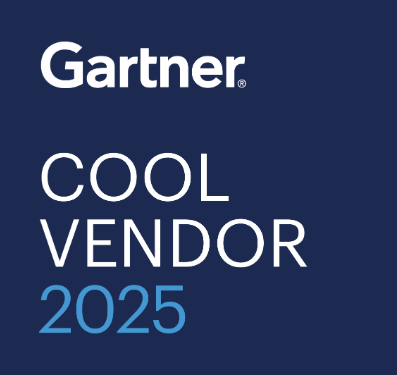Microsegmentation Buyer's Guide & Checklist: Essential Resources for Zero Trust Security
What You'll Gain from This Guide
Executive Summary
Security leaders at large enterprises face mounting challenges in protecting expanding attack surfaces against sophisticated lateral movement attacks. The Elisity Microsegmentation Buyer's Guide provides a comprehensive framework for evaluating modern microsegmentation vendors and their tools that prevent east-west attacks while eliminating operational complexity.
This essential resource delivers actionable insights for CISOs, Security Architects, and IT leaders in manufacturing, healthcare, and industrial environments seeking to implement identity-based microsegmentation without disrupting operations. You and your team will gain a comprehensive checklist of microsegmentation requirements.
Download this White Paper

Current Trends Driving Microsegmentation Adoption
The enterprise security solutions market is being reshaped by several critical factors that security leaders must address. Zero Trust initiatives are becoming central to enterprise security strategies, while the persistent threat of ransomware highlights the urgent need to limit lateral movement within networks. Organizations managing hybrid cloud architectures require consistent security controls that work seamlessly across environments, and the rising adoption of containers demands new approaches to workload-level security.
Forward-thinking organizations are seeking solutions that close attack surface gaps, provide unified visibility across their complex environments, and automate policy creation and management to reduce operational overhead. Modern network segmentation strategies are driving toward microsegmentation, and toward greater automation and expanded use of AI/ML for policy optimization, making it a critical component of modern security architectures.
Get the full Buyer's Guide and Checklist now
Key Features and Capabilities You'll Want in Your Requirements
The guide includes a comprehensive microsegmentation checklist of the core requirements that your teams and network security program will benefit from.
For example, modern microsegmentation solutions must provide comprehensive asset discovery and classification capabilities that automatically identify and categorize workloads across your enterprise. Policy simulation features should allow security teams to test changes before enforcement, reducing the risk of business disruption when implementing security controls.
Core functionality requirements include robust visibility and discovery that provides comprehensive mapping of all assets and communication flows, coupled with sophisticated policy creation and management tools that enable granular definition and automated recommendations. Technical requirements should focus on network-based controls that leverage your existing infrastructure for enforcement and extend beyond traditional IP address or port-based controls to utilize identity and metadata for more precise segmentation.
Download the Microsegmentation Buyer's Guide to get the complete list of microsegmentation requirements so you can assess microsegmentation vendors.
Implementation Considerations for Success
A successful microsegmentation implementation follows a phased approach that begins with a brief setup period, followed by thorough discovery and planning over 2-6 weeks. Initial deployment and policy development typically takes 4-25 weeks depending on your chosen vendor and environment complexity. Production rollout may extend from weeks to months, with ongoing optimization and expansion continuing afterward. The most successful deployments focus on getting simple policies active in the first two weeks to demonstrate value early in the process, building momentum for broader adoption.
Resource requirements vary by platform, but a typical enterprise deployment requires a full-time project manager for 3-6 months, part-time ongoing support from a security architect, initial setup assistance from network engineers, and consultation from security teams during policy development. This thoughtful resource allocation ensures effective implementation while minimizing disruption to ongoing operations.
Understanding TCO and Pricing Models
When evaluating microsegmentation solutions, looking beyond initial licensing costs to understand the total cost of ownership across your security infrastructure is essential. Traditional segmentation approaches using VLANs and firewalls may appear cost-effective initially but often conceal significant operational expenses related to specialized networking expertise, complex change management processes, and regular hardware refresh cycles.
Modern cloud-based microsegmentation platforms typically follow a subscription pricing model that, while possibly appearing more expensive at first, often delivers superior long-term value through automated operations and reduced complexity. Their integrated approach combines visibility, policy discovery, and enforcement in a single platform, eliminating the need for multiple point solutions.
Organizations implementing comprehensive microsegmentation solutions report substantial benefits, including cyber insurance premium reductions of 15%-30%, incident response time decreases of 40%-60%, policy management overhead reductions of 60%-80%, and vulnerable attack path reductions of 70%-90%. These measurable improvements deliver quantifiable ROI beyond enhanced security posture.
Comprehensive Microsegmentation Checklist: Key Questions to Ask Microsegmentation Vendors
Here is a sample of the microsegmenation checklist.
Use these essential questions during your vendor evaluation process to ensure you select the right solution for your enterprise:
Visibility & Discovery "How does your solution discover and map users, workloads and devices and their dependencies across hybrid environments?"
Policy Management & Enforcement "How are policies created, tested, and validated before enforcement?"
Architecture & Deployment "What deployment options are available (software agents, agentless, network-based)?"
Operational Technology Support "How are OT protocols and devices discovered and classified?"
Incident Response & Remediation "What capabilities exist for quarantine and isolation during a security incident?"
Management & Reporting "What dashboards and reporting capabilities are included for ongoing visibility and compliance?"

Get Your Complete Buyer's Guide and Evaluation Checklist
We know that there are several microsegmentation solutions on the market today. There is reason that Elisity was chosen as a "Strong Performer" in the Forrester Wave™ Microsegmentaiton Solutions, Q3 2024.
We know that there are several microsegmentation solutions on the market today. There is a reason that Elisity was chosen as a "Strong Performer" in the Forrester Wave™ Microsegmentation Solutions, Q3 2024.
Learn why and how to compare microsegmentation vendors and their tools. Now is a good time to download the full buyer's guide to access detailed vendor evaluation criteria, implementation roadmap templates, ROI calculation frameworks, a complete technical microsegmentation requirements checklist, and key questions to ask every vendor during your evaluation process.
Get your copy of this comprehensive Buyer's Guide and Checklist
From Our Blog
Stay up to date with what is new in our industry, learn more about the upcoming products and events.

Elisity Release 26.1: Smarter Insights, Expanded Infrastructure Support, and AI-Powered Device Classification

CIRCIA Healthcare Compliance Guide: New Regulations & Critical Controls for 2026




